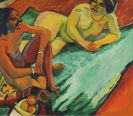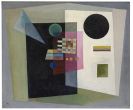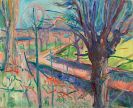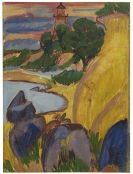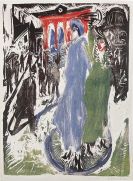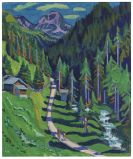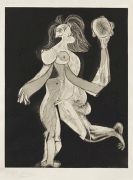
August Endell
Berlin
1871 -
Berlin
1925
August Endell, who studied philosophy and psychology in Tübingen and Munich, was an entirely self-taught artist. The lectures given by Theodor Lipps in Munich made August Endell aware of perceptual phenomena. From then on he devoted himself intensively to perception. In 1896 August Endell met Hermann Obrist in Munich, whose work caused him to transfer his theoretical knowledge of art to architecture and crafts as well.
August Endell was primarily concerned with translating his idea of mobile space into architecture and decorations. In 1896 August Endell received his first commission. Endell's design for the façade of Photostudio Elvira in Munich with turbulent intertwined Jugendstil forms and bizarre motifs made him famous overnight.
In 1898 August Endell joined the "Vereinigte Werkstätten" in Munich. He showed jewelry designs at the Munich Secession exhibition. August Endell collaborated on the journals "Pan" and "Jugend", produced illustrations, and wrote articles. Thoroughly versed in art theory and style as he was, August Endell expressed important ideas on the stylistic intention underlying the work of Jugendstil artists.
In 1887 Endell wrote the essay "Möglichkeiten und Ziele einer neuen Architektur", in 1901 "Originalität und Tradition", and in 1908 "Die Schönheit der großen Stadt". In 1901 August Endell went to Berlin, where he began to distance himself from the intricate and turbulent forms of Jugendstil. This was the period in which he produced most of his town houses and villas in Berlin and Potsdam. Until the outbreak of the first world war, August Endell was head of a design school in Berlin.
In 1914 August Endell was proposed to succeed Henry van de Velde as head of the "Kunstgewerbeschule in Weimar" but Walter Gropius was appointed. From 1918 until his death in 1925, August Endell was head of the "Akademie für Kunst und Kunstgewerbe" in Breslau.
Would you like to sell a work by August Endell?
Infos for seller
